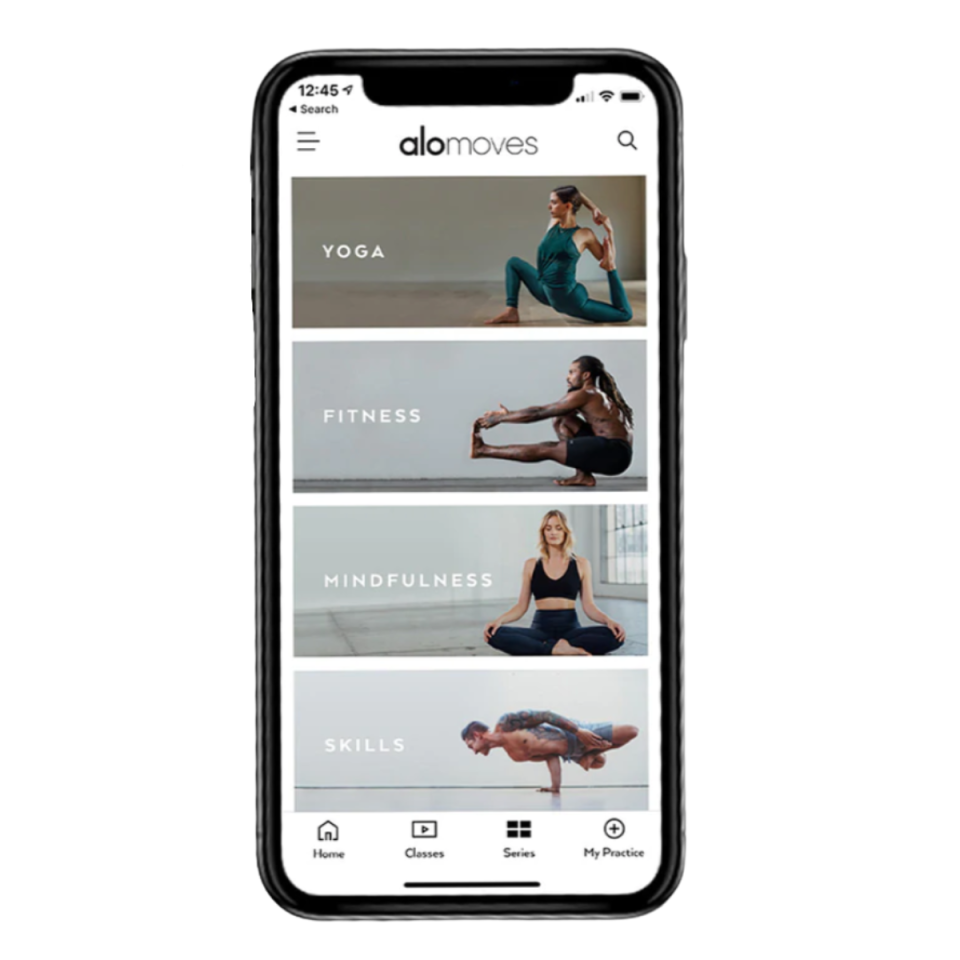Strength Training Is Essential for Women’s Health—Why Aren’t More of Us Doing It?

Getty Images
This year at my annual checkup, my doctor said something I didn’t expect: “Have you considered strength training? You basically have no muscle.”
This is true—and quite frankly, embarrassing. I have little-to-no upper-body strength beyond what I can muster lifting a carry-on onto an airplane overhead compartment. Still, I thought that was fine: I drink plenty of water; eat fruits, vegetables, and adequate protein; and have a sleep score worth bragging over. Oh, and I walk thousands of steps a day—10,000 at least—just like I’ve been told to since I started reading women’s magazines.
I’m in such optimal health, in fact, that I reversed my prediabetes—with the help of Ozempic—last year. I look and feel better than ever before and my blood-sugar levels prove it. Wouldn’t this mean I’m doing everything right? Apparently not: Despite what I’d been led to believe about high-intensity cardio reigning supreme, strength and mobility are equally deserving fitness goals that countless women like myself have spent their lives overlooking.
“As women, for as long as I can remember, it’s been instilled into us to be ‘thin’ or have ‘six-pack abs,’ resulting in women spending hours doing cardio and crash dieting to fit into an impossible beauty standard,” Alo Moves strength instructor Jade Smith tells Glamour. However, health is so much more than being “thin,” unlike what many women were led to believe growing up.
“Cardio was often emphasized for women to achieve a certain body type, while strength training was seen as more for men,” adds Benny Zhang, certified personal trainer and fitness director at Speediance. “Media and marketing reinforced this idea, focusing more on cardio workouts for women.”
However, a sufficient exercise regimen is not unlike a well-balanced diet: You wouldn’t eat just one food group for the rest of your life, right? The same goes for how you work out.
“A well-balanced exercise program should include cardiovascular, strength, and mobility components,” says personal trainer Lauren DeLuca Zermeño, who believes it’s time to change the narrative around strength training. “The number one goal I hear from female clients is ‘I want to look lean and toned,’ and that’s exactly what strength training can do. It doesn’t make you ‘bulky.’”
In fact, contrary to popular belief, strength training is especially important for metabolic health like losing weight, reversing prediabetes, and managing diabetes.
“People think, ‘To lose weight I should just run a lot,’ but that comes at the expense of our lean body mass,” Zermeño continues, which is why strength training is so often recommended for weight plans, including calorie restriction, weight loss, and/or taking GLP-1 medications like Ozempic.
“As we lose weight, we want to be sure we are building muscle instead of losing it,” says Orlando Health physical therapist Christine Mara, DPT. “Without strength training, muscle mass decreases with age, leading to sarcopenia,” which is “the loss of skeletal muscle mass and function,” per the Mayo Clinic.
Neglecting strength training also leads to weaker bones, reduced metabolic efficiency, and increased risk of injuries over all, adds Sergii Putsov, CPT, a former Olympic weight lifter who serves as head of sport science at Torokhtiy Weightlifting. “While cardio improves heart health and stamina, it doesn’t provide the necessary stimulus needed to maintain bone density and muscle mass.”
At the same time, it boosts metabolism as well as mobility and flexibility, and “makes your bones stronger, improves your brain health, and increases your quality of life, especially as you age,” says Putsov. Another bonus? It reduces the risk of osteoporosis by increasing bone density while strengthening muscles around joints, providing better support, adds Zermeño.
Some of the benefits are more unexpected, too: According to Mara, strength training has been found to reduce symptoms of anxiety and depression and improve overall mood while reducing the risk of chronic diseases like diabetes and cardiovascular conditions. What’s more, it can help you better manage blood-sugar levels, adds Putsov.
Really, the perks of strength training can be summarized into one word everyone loves these days: longevity (or living longer). “People are always looking for the next anti-aging product or how to look and feel younger, and going to the gym is part of that,” says Zermeño, who tells Glamour that a recent study showed that women who performed regular muscle-strengthening activities had a 19% reduction in mortality risk. “The benefits of strength training for the body work together to enhance longevity.”
Fortunately, more and more women are catching on to the importance of getting strong.
“The growing embrace of strength training by women in mainstream fitness is backed by solid evidence and cultural shifts,” says Zhang. “Research shows it’s not just about building muscles but also improving bone density and metabolism, while social media hashtags like #GirlsWhoLift are empowering women to share their journeys and break stereotypes. These changes reflect a shift in how we define beauty and health.”
Have you finally been influenced? Great (and same)! Here’s a beginner’s guide to strength training, according to fitness experts.
Incorporate strength training into your daily routine
Your strength training journey doesn’t have to start with hundreds of squats a day; you can hack your way up while building strength. “Incorporating simple hacks into your daily routine can help boost muscle strength over time,” says Zhang. “One effective strategy is to focus on increasing your daily activity level by incorporating bodyweight exercises into your routine whenever possible.”
For example, Zhang suggests doing squats while brushing your teeth, calf raises while waiting for the kettle to boil, or lunges while watching TV. “Prioritize activities that naturally engage multiple muscle groups, like walking or biking uphill, carrying groceries, or gardening. These functional movements not only build strength, but also improve overall fitness and mobility,” he says.
If you’re looking to add a bit of resistance, you can also try using household items like water bottles or bags filled with books as makeshift weights and/or opt for ankle or wrist weights during daily activities.
Smith aims for 5,000 to 10,000 steps a day. In case you thought the recommendation was 10,000 steps, recent research found that walking anywhere between 2,600 and 2,800 steps a day has significant health benefits, with approximately 7,000 steps decreasing one’s chance of cardiovascular disease by more than half. “Taking the stairs, wearing your ankle weights on a walk, biking, or swimming are all simple yet effective ways to move your body in easy ways.”
Still, the secret to boosting muscle is to make sure your lifestyle supports your goals, says Zermeño. “You can train all you want, but you won’t be able to see results without proper diet and sleep.” Some easy ways to do that are to get adequate protein and sleep, and take movement breaks. “Aim for 20 to 30 grams of protein with each meal and make it the star of your dish,” she says. “Getting seven to nine hours every night allows our muscles to recover.”
How to start strength training with exercise
Start small and gradually add resistance.
“Anyone who is still new to strength training should start slowly and focus on proper form to avoid injuries and build a solid foundation,” says Putsov. “You can begin with bodyweight exercises such as squats, lunges, and pushups, which help develop strength and stability without the need for equipment.”
In fact, when it comes to getting started, Zermeño suggests the three S’s: simple, schedule, support. “Keep it simple. Repeat those basic exercises and you will see results,” she says. “Squat, hinge, push, pull, and plank. If it looks like a circus act, you’re doing too much.”
A good rule of thumb is to create a circuit that involves one upper body exercise, one lower body exercise, and one core exercise. “Pick one exercise from each category below and aim to complete three rounds of 10 reps each,” says Zermeño.
Lower Body: Squats, lunges, glute bridge, hip thrust, good mornings, single-leg deadlifts, step-ups
Upper Body: Push-ups, bear-crawls, triceps dips, superman, downward dog to the plank
Core: Forearm planks, side planks, burpees, crunches, leg raises, Pilates teaser or roll-ups, bicycle crunch
As you become comfortable with these movements, Mara suggests progressing to resistance bands in the following weeks and/or months. “They are very affordable and versatile, which is perfect for beginners,” she says.
Once you have a steady routine of strength training and feel confident in your form and notice improvements in strength, you can start implementing light weights like dumbbells or kettlebells, and building from there.
Consider a trainer-led program.
If you’re really feeling stuck—and concerned about injury—Smith suggests starting a program with a trainer. “Whether that’s an app like Alo Moves where you can work out with me, or hiring a trainer in your local area to help with the basics, it’s important to work with a trainer you trust,” she says.
“Working with a certified personal trainer is a great way to receive that personalized guidance and feedback, even if it’s just for a few sessions,” Zhang agrees.
Smith’s suggestion? Alo Moves’ legs-and-glutes series 10 Days to Stronger Legs. “You can do it at home, and I always say basic is best,” she says. “Do not overcomplicate working out, especially if you are new!”
Remain realistic.
This isn’t common advice, but it should be: Don’t compare your gains to anyone else’s.
“Remember that everybody is different. Trying to look just like an influencer or a celebrity is unrealistic,” Zermeño says. “Your body and their body are not built the same, and you can’t train genetics. Set a goal that is realistic to you and be happy in your own skin.”
Listen to your body.
“Don’t forget to listen to your body and progress at your own pace,” Zhang concludes. “It’s all about enjoying the journey and celebrating your progress along the way.”
Shop everything you need to start strength training below. Your body will thank you.

Bala Bangles Wrist & Ankle Weights
$55.00, Amazon

Adjustable Dumbbell Set of 2, 4 in 1 Free Weights Dumbbells Set
$35.00, Amazon

Fit Simplify Resistance Loop Exercise Bands
$7.00, Amazon

Alo Warior Yoga Mat
$128.00, Bluemercury

Alo Moves Membership
$129.00, Alo Moves

Owala FreeSip Water Bottle, Dreamy Field
$28.00, Amazon
Danielle Sinay is the associate beauty editor at Glamour. Follow her on Instagram @daniellesinay.
Originally Appeared on Glamour


